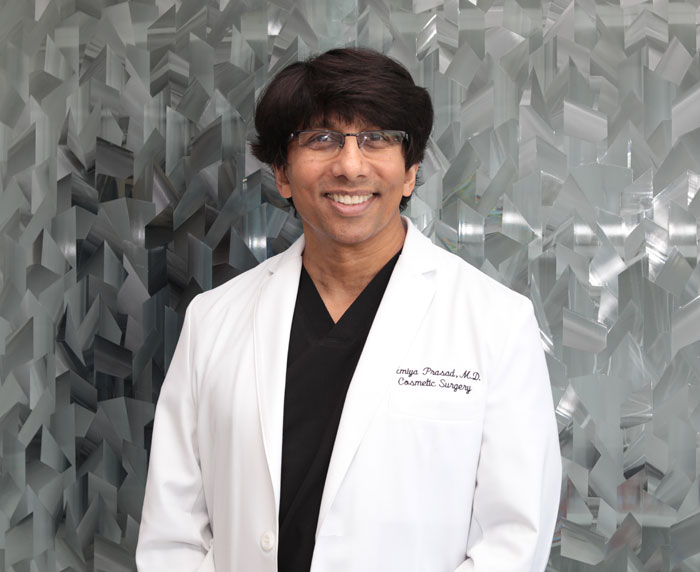Lower Blepharoplasty with Fat Repositioning: Why it is Not Advised, and Better Treatment Options
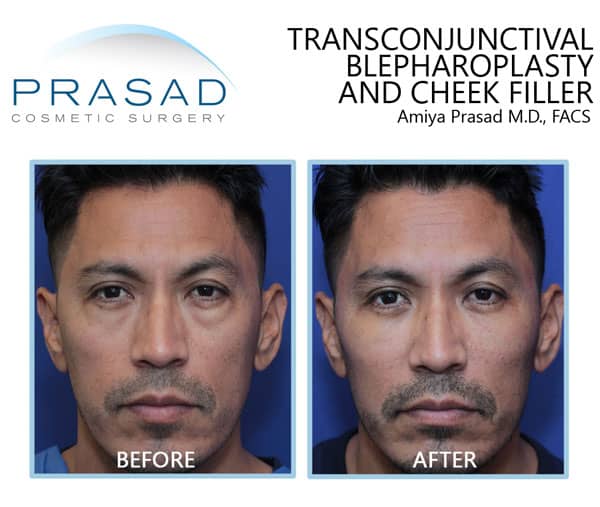
People considering lower eyelid surgery to treat puffy eye bags are often concerned about the potential for a hollow appearance after surgery. Some doctors attempt to ease this fear by explaining that the fat that causes puffy eye bags can be moved to an area surrounding the eyes where there is hollowing, rather than being reduced. As a cosmetic eyelid surgery specialist, I have experience with this procedure as well as performing revision surgery for people who had fat repositioning surgery performed elsewhere. I’ll explain how I help patients who are concerned about potential hollows after lower blepharoplasty, as well as the dangers of fat repositioning surgery in comparison to other options.
Understanding Puffy Eye Bags
Puffy eye bags that are present all the time, regardless of sleep, allergies, diet, or sinus issues are caused by fat.
The fat that normally surrounds and cushions the eyeball might push forward, causing noticeable bulges under the eyes, which is known as lower eyelid fat prolapse. The most effective technique to eliminate the appearance of eye bags is to shape and minimize the fat that causes these bulges. Sculpting and removing fat from the lower eyelids is done surgically with a procedure called lower eyelid blepharoplasty.
Transcutaneous vs. Transconjunctival Blepharoplasty
The most common performed procedure is called transcutaneous blepharoplasty, where fat is sculpted and removed through an incision made underneath the eyelashes. A more specialized and technically advanced procedure, which I prefer is called transconjunctival blepharoplasty, where there is no external incision, and the fat is sculpted from the inside of the eyelid.
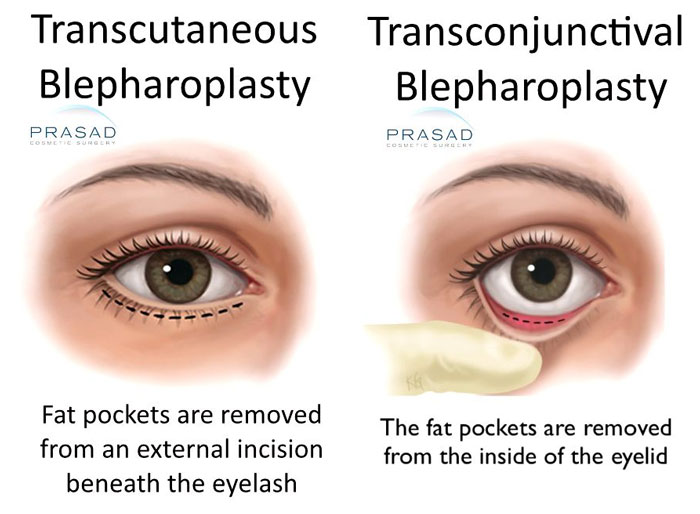
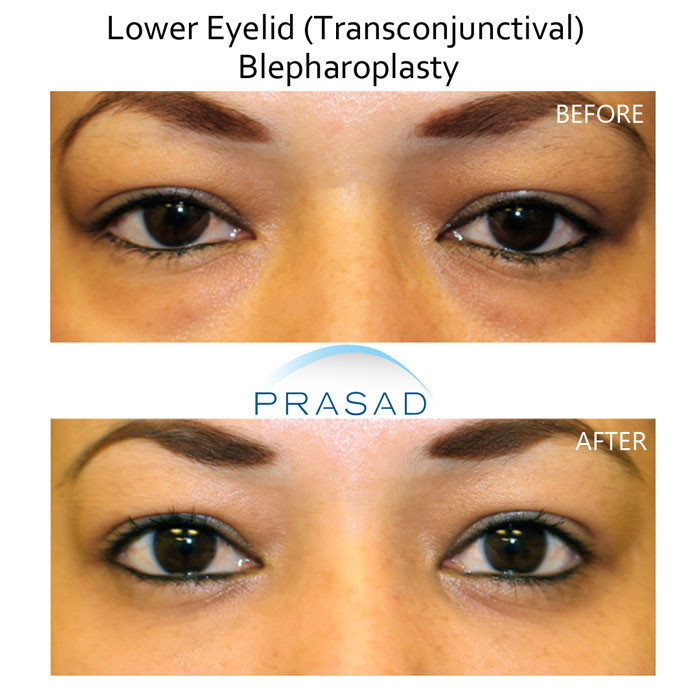
Advantages of Transconjunctival Blepharoplasty
The transconjunctival approach provides advantages for the patient because there is no external incision. Since I execute the treatment from inside the eyelid, I preserve and safeguard the lower eyelid’s delicate muscles and support structures. I’m able to reduce the danger of typical issues like the eyelid being pulled down or rounded, also known as lower eyelid retraction.
I’ve discovered that many people associate hollowing with the appearance of lower eyelid retraction. This makes sense because pulling down the eyelids gives the appearance of a drawn or sunken expression.
Why Lower Blepharoplasty with Fat Repositioning is Not Advisable
Frequently, people with eye bags have hollowing in other areas around the eyes, such as the rim of the eye socket, or upper cheek. A doctor may offer lower eyelid blepharoplasty with fat transpositioning to fill the area of the tear trough and adjacent bony rim.
During surgery what’s called a pedicle of fat, which means the fat is still connected to the blood supply from the eye socket is moved over the rim and sutured into the area. Some doctors cut the fat and place it there and suture it.
Risks of Fat Repositioning
This all may sound logical and intuitive but it is generally actually problematic. Why? First, the skin on the eyelids is particularly thin, making the area appear lumpy and puffy. Being bent over the rim compromises the blood flow, causing the fat to grow in the same way as your arm would swell if you left a tourniquet on for too long. Bending or kinking the blood flow can also deprive the fat of oxygen and nutrients, causing it to die.
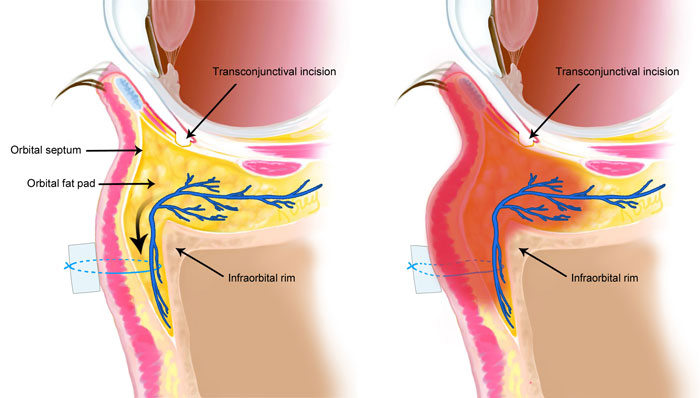
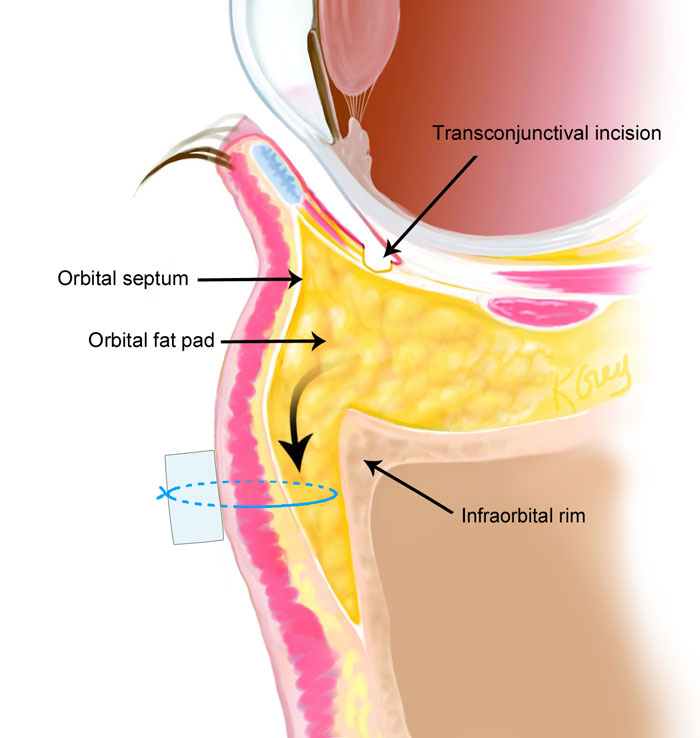
Challenges and Unpredictability
I witnessed a surgeon who claimed to be a top expert demonstrate this surgery. He then removed 90% of the prolapsed fat and extracted a little, inconsequential fat pedicle for so-called repositioning. Any qualified surgeon would understand that fat repositioning would make no difference in the cosmetic outcome. Patients who came to see me for a second opinion after having fat relocation surgery performed elsewhere reported persistent swelling and lumpiness that required steroid injections. People’s tolerance for uncertainty is low these days.
Alternative to Fat Repositioning
I approach rejuvenation for under eye bags during consultation by also looking at the projection of the cheek directly under the eye as well as the cheekbones. I look at the eyes and cheeks as a combination rather than looking at the eyes in isolation. It is typical to detect potential space beneath the eyes and cheek bones for volume increase, whether due to genetics, or bone loss caused by facial aging.
Structural Volumizing
As a surgeon with experience performing tear trough implants and cheek implants, I use the same principles to apply longer-lasting hyaluronic acid fillers to the bone structure, a technique known as structural volumization.
I commonly utilize a filler such as Juvederm Ultra Plus or Juvederm Voluma to augment the cheekbones while performing lower eyelid surgery.
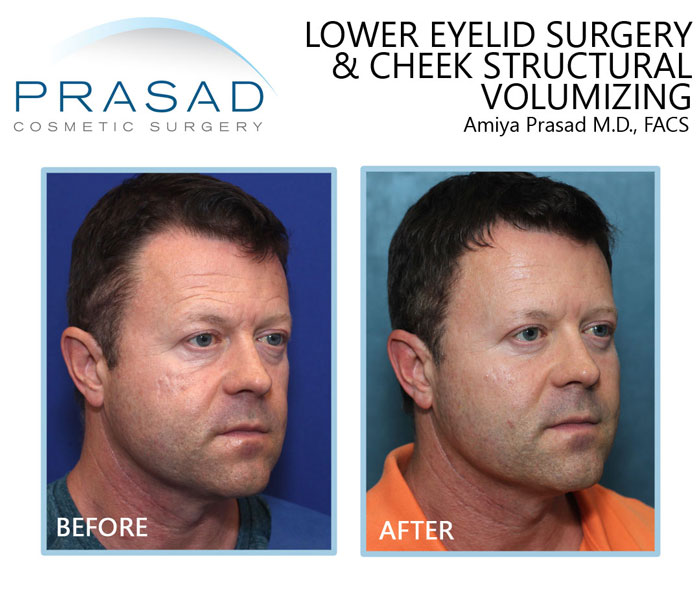
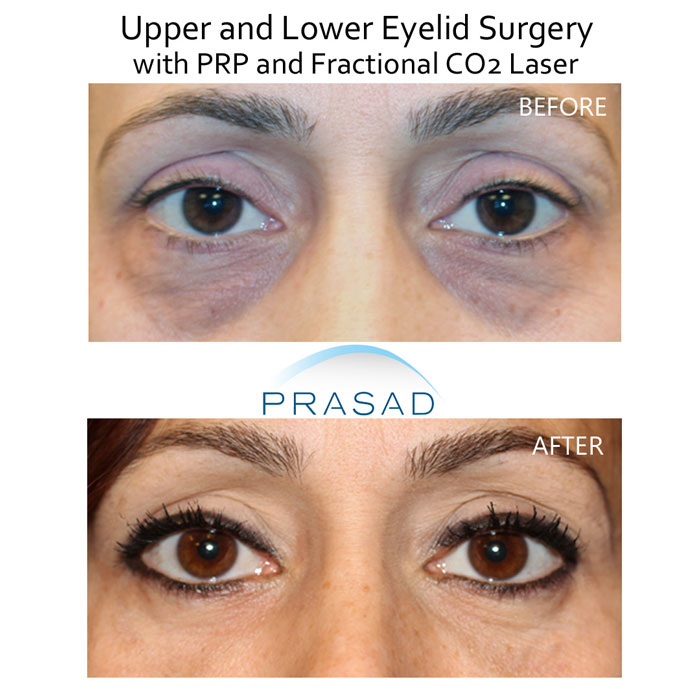
Benefits of Hyaluronic Acid Fillers
If it is beneficial to add volume to the tear trough later, we can always do so. Unlike fat transfer, hyaluronic acid fillers can be safely and readily dissolved if necessary using the enzyme hyaluronidase.
Achieving Natural Results with Lower Eyelid Surgery
Addressing puffy eye bags is not a standard approach, and attaining natural results requires some skill. The idea is to appear as if you’ve never had bags under your eyes.
Transconjunctival lower eyelid blepharoplasty is a common procedure in my private practice, and I use local anesthetic and LITE IV sedation for it. Our patients leave our office feeling comfortable and generally return to work within a week.
Although the concept of fat repositioning appeals intuitively, there is little reason for this technique, which often gets promoted but not really executed. If you have under eye bags, I believe that a correctly done surgery, combined with other treatments such as filler placement, can help you look great in a safe and predictable way. I hope this information was helpful.
Lower Blepharoplasty Manhattan, NYC and Garden City, Long Island, New York
Dr. Amiya Prasad is a Board-certified cosmetic surgeon, and a Fellowship-trained oculoplastic surgeon. He has been practicing in Manhattan and Long Island for over 25 years. Dr. Prasad does upper and lower eyelid surgery almost every day in his clinic, as well as revision eyelid surgery to repair previous work done by other specialists. He also frequently performs non-surgical eyelid procedures like laser resurfacing, fillers, and platelet-rich plasma or PRP.
To schedule a consultation, please fill out the form below, or call one of our offices at (212) 265-8877 in Manhattan, New York City; (516) 742-4636 in Garden City, Long Island; or (703) 356-1336 in Vienna, Virginia.
